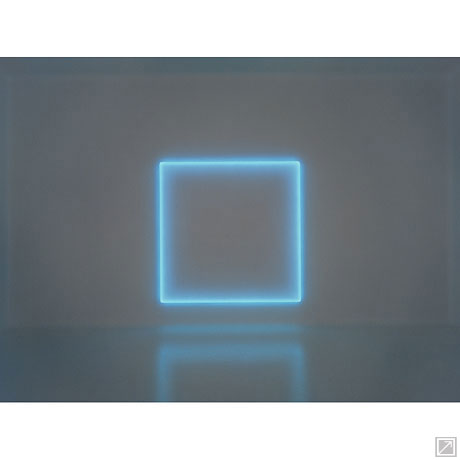
Molly:
Phantom Luck might be a better illustration of a defence of the ritual theatrical space, but I want to ask this with reference to Parking Lot because it seems to open with this very stark proposal of the question of the spectacle: a scene that reminds us of Barthes and other famous remarks on photography, and the Flusser you were discussing on the blog but which enacts those remarks as a dramatic moment through which melodrama and modernism and realism all intersect. A man is confronted by his photographic image. And he flatly rejects it. And we’re not sure whether this rejection is legitimate or what it means. But we know this is something we’re going to find out:
MAN holds it up, looking at it.
MAN I’m not sure. (pause) No. No, I don’t believe I know him.
VOICE (OS) Look again.
MAN looks closely at the 8×10 photo…closer this time.
MAN I do not know this man.
SILENCE.
MAN Who is this? Who is the man in this photo?
SILENCE.
VOICE You don’t recognize him? Never seen him before?
MAN
(looks once more quickly) No. (beats) No, I….I …there is nothing….I mean, I don’t know…but I cant’ tell you Ive ever seen him, not when I haven’t. I haven’t seen him, not ever.
SILENCE.
MAN Who is it? What’s his name? This man…
waves the photo at the unseen voice.
VOICE(OS) Thats you. Twenty six years ago, Lane. (pause) Thats you, in Kingman. In Arizona, nineteen hundred and eighty six. That was summer. (pause) Remember now?
MAN No. (pause, looking at photo) Arizona, eighty six. Sure, Lisa was with me. Sure.
Now what strikes me immediately here is that the dead nature, the ghost artifact, the suspicious and unrecognizable spectacle forces into the blank space of the theatre all this stage setting. The scene opens in an indeterminate space which is constructed solely of character and language. It is really just “the theatre”. An abstract theatrical space of a conversation. And it is the possibility of spectacle – or recording, of evidence collected and brought against one’s memory – that forces the details of place immediately. But there is something suspicious about it from the start – there is something wrong and suspect about the vivid conjuring of the place and its content that is forced onto the character and the theatrical stage by the photograph and it’s record. As it specifies, we get the sense it is lying.
Already we are in a the space that is figured by “parking lot”. A blank abstract space into which this other space – mobile, in memory, disputed – suddenly slides and situates itself. But it can leave at any time.
So it seems to me this play opens with a confrontation and contest between theatre and cinema – really theatre attacked or challenged by the cinema. Invaded by spectacle and the photograph. And this is what I think the play is really about. And I think theatre wins this contest, but it is kind of maimed in the process of defeating the spectacle. The play stages the wounding of theatre and its sociality by the spectacle, and ends (on the ramparts of Εlsinore at the beginning of Hamlet,which seems to me the dominant intertext):
LANE I can’t see you. You want to tell me something? Show me a photograph?
SILENCE
LANE What? (pause) You there? Is anyone there?
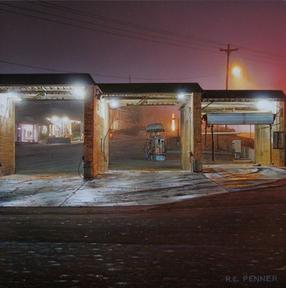
JS:
I think this cuts to the heart of theatrical space. But before I answer directly, I want to say something about the text. About the dialogue. Now, its awkward to talk about your own writing, so forgive that for a moment…..but the dialogue is creating space, separate from the images being conjured up. The breaths, the beats, the negative space, as it were, that is created. We hear a character thinking through the question. Now….literally, the character, Lane, cant see who he is speaking to. There is an early film of Arthur Penn’s, Mickey One, with Warren Beaty. There is a sequence in there where this cocktail lounge piano player (Beatty) has to audition, as I remember it, and the lights are bright on stage, and he cant see the audience. He tells jokes and plays….but he cant see if anyone is out there. I have always remembered that scene.
It was very theatrical. He is performing this role….joke telling piano player, but the question is raised concerning if there is anyone at all listening and watching.
It is this purely existential moment. Who are we? Suddenly Mickey is not sure because he is not sure anyone can see him. This goes back to that Goffman book, Presentation of Self in Everyday Life. This is the heart, at least in one sense, of why humans created theatre. This brings up a discussion of origins. There is a useful book by Eli Rozik….Roots of Theatre. He speaks of the braiding of performance and ritual, or ritual and theatre. The point though is that this does address this question of space. The problem is that while I think Rozik is very good, he still literalizes the idea of space. For me, the space is created by text and voice and gesture. And it is interesting, too, that Rozik taps the Goffman book as well. But he is right to discount the idea of origins and replace it with roots. In any event, this idea of space is almost ontological. Whatever the roots, however the early Greek tragedies were formed, there is a difficulty in this reductive notion of space. Purposefully built theatres are not the issue. And here I would add that I don’t think street theatre or one character plays actually can ever reach the level of actual theatre. For what is missing are these sort of fragile pre-conditions for the creation of “space”, and that begins with *two* characters looking at each other. And it links to mimesis. And this is an insanely complicated topic.
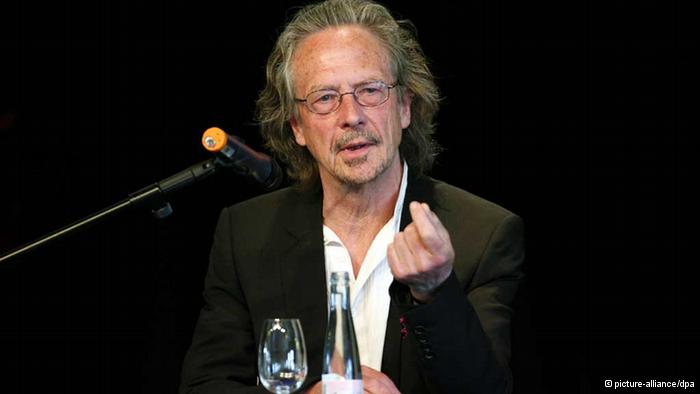
Peter Handke
Text is the missing component in the discussion, and it is why I bring up the dialogue you quoted above. This is also why improvised dialogue fails miserably. The sound of an actor “thinking” about what to say is very different than an actor thinking. The text is there to be recited, to be spoken and be heard. This is the poetics of space — here I am being reductive. Each scene must be carefully constructed, to use a metaphor here, so as to allow this space to exist. It can be shut down, the door close, very quickly. This is why, at least for me, I often work with the same actors again and again. My favorite actors are ones whose concentration is such that they can afford to let themselves listen. The silence between utterances…..is perhaps the very heart, the core of theatre. What is happening there?
In the scene above, the offstage and unseen voice asks questions. It interrogates Lane. This implies a world of associations. Authority for one. But more, this empty physical space means only the actor and the text exist.The audience knows, mimetically recreates for themselves, a psychic space. A place, an opening, for the ideas of identity and existence to be questioned. Ive always thought that plays ask questions, they dont give answers. But the question is not the question a character is asking, it is the question the “play” asks. Why is there this play going on?
Here we arrive at the place where foundational mental faculties enter. The dream life of people.Mimesis is not imitation, as I use it anyway, but a form of thought, a form of reality. Theatre is an organ for manufacturing reality —- but more a sort of mental interior reality — the questioning of our own psychic origin, our own individual history, childhood trauma, and yet, it can never step outside history. That is the gordian knot. Literally, in a sense, it is a gordian knot. But it does link in a way with Freud — and its irrelevant the meaning of Freud’s theory, but more that dreams are the source of how we apply images in our mimetic storytelling to ourselves.
The topic of images we can get to next time, as you suggested. The difference between dreams and theatre has to do with history. But this is very slippery because language is historically mediated. As Rozik says, theatre is a social form of dreaming.
But its more than that. Plays have structure and form. Here is why an actor cant improvise.
The text taps into societal wishes and historical tensions. The contours of our mimetic re-narratiting are shaped by history. But the allegorical trace elements of history. It is why you cannot just have a play be ‘anywhere’. It must be somewhere, and that somewhere has a history and that history has a storehouse of associations and meanings and codes.
Now Freud thought we had an archaic heritage. Something akin to a collective unconscious in a sense. However one looks at that, theatre does intersect with something very primordial in our own sense of self and other.
The phylogenic component is really open to debate……but whatever the specifics of our recreation of a traumatic past, the aspect of what is forgotten seems significant for playwrights and actors. This is why I find Lacan so useful. For he created a scaffolding on which this forgotten or expelled material can be understood. Its not really important if its literally true, for nothing at this point is literally true.
How do our childhood wishes and desires find expression in text? I think this is what the project is all about. And it raises these issues about realism, for example, that I wrote about recently.And here we also run into the question of what a symbol is, and what a metaphor.
And religion finally sort of enters the discussion, too, and myth and ceremony. In any event, the opening of the play above, for me anyway, begins with laying a format for the ‘real’, but I had better try to explain what I mean by that. The real is the text. The question. The interrogation. So…maybe I believe that dreams are a form of text. A sort of interior play. And like dreams, plays cannot be expected to make sense. Or have a conventional meaning. They cannot be enclosed that way. I think everyone has had that experience of day dreaming, of dozing off, and almost, ALMOST slipping into a dream state. You are allowed the briefest of glimpses of how condensation and overdetermination work — and this very elusive and mysterious sort of mental glitch takes place where we snap ourselves back to waking reality. But we have seen another ‘space’. A timeless realm of different codes. So, the play must allow the audience the ability to slip somewhat into this state of reverie. And its as if one glimpses one’s own childhood again, too. The way pre-linguistic children treat image. Or maybe not. But I know that for me, the best theatre always creates something of a reverie. And…..take Woyzek, Buchner’s play. It is a dream. It has this magical sense of the dream world, but it does this by being very carefully anchored in the real world of power and authority. The world of institutions.

Nothing is made to mean anything in particular in dreams. Dreams simply express things we often have no notion how to decode…and yet they are produced through us, our history, our experience.
So if theatre is social dreaming, then theatre is a space where censored material, that which offends and causes shame and guilt, is offered up to be narrated. To be given a form. That is what mimesis does I think. It is our explantion to ourselves, in a sense, of our own forgotten desire and pain. But it’s “social” in theatre. That is what is so fascinating to me. This collective attention of the audience. It is a place where for once, the narcissistic cul de sac of the individual’s desire is mediated by society and history. The text again.
So that scene above, the dialogue ….and I mean this is just intuitive …..the dialogue must avoid answers, must avoid exposition-. Kingman Arizona. What happened in Kingman? We have some understanding of Kingman. Some more understanding, some less. But it IS a place, and something happened there, so the unseen voice implies. Now the actor makes of this what he can….based on his own history and dream life. Theatre is thrilling because we touch something of a primordial past, something of our own guilt and transgressions, our own desire, too. But we do it as part of an audience. It is the history of our civic selves, and additionally, a history of how the individual enters the social.
I would say the elliptical and halting breaks in those lines are crucial, and a bad actor can miss these beats totally. Nothing is more painful to a playwright than hearing his or her play performed by bad actors. The actor must know this is about his shame and longing and hidden desires. Otherwise its kitsch.

Georg Buchner
Now as for a steel cage death match between film and theatre, I think there is real truth to this, though I hadnt thought of it that way. I think I had thought about photography though.
I’ve always felt my plays were closely intertwined with cinema. Part of what was being challenged was the idea of naturalism in the sort of traditional/conventional play with a set and entrances and exits. I’ve always hated entrances in theatre, as they are usually practised. And I think, reading what you wrote, that this is because it violates a sense of the sacredness of offstage….not to sound too twee here. But suddenly that door the actor walks through is made banal. The director and writer are saying, oh, see this REPRESENTS a door like the kind you use at home. Well, its NOT that sort of door. And if you trivialize it by making it “realistic” you do a violence to your theatre piece. And film is a large topic if we are dealing with dreams……because they operate in their won register of dreamwork. And its strategically different from theatre.
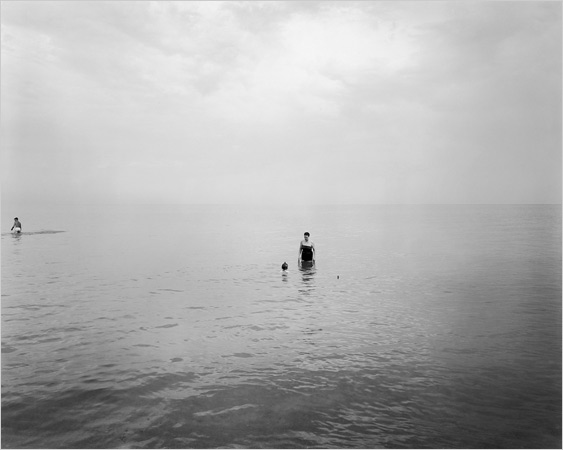
Molly:
Well this has a lot of directions to go in; I want to stick with this question of space and the spectacle. So the opening scene stages a “real” that is conspicuously theatrical, and then within this real there opens another space that is conspicuously cinematic/photographic. It has detail, but what links it to the theatrical space as legitimate is the relationship – the woman who was there, who makes the man in the photograph real. Yet this space within the space is suspicious in relation to the theatrical space of language in which it opens. Now later the same kind of thing happens “in” the restaurant:
LIGHTS fade…..
LIGHTS UP SLOWLY…
MO stands alone.
MO That boy was a problem. Henrietta was a nice lady. We had an agreement you could say. She worked for me. Would spend the night — Saturdays….only then. One night. Each week. (pause) That boy…I didn’t know what to do about him. I couldn’t stand to have him around, in my house….I didnt ever let him stay in my house. It was mean of me. (pause) I know it was mean, but it would have been more cruel to get too close to him. (pause) I had disappointed my father, but that boy, he had no father. He had nobody to disappoint. He had Henrietta. (pause) She was … she was my counter person, answered the phone, handled the paperwork. I was a disappointment with what I did — with my life, owner of a hardware store, in the desert…only Jew for eighty miles in any direction I think. Maybe there were Jewish soldiers, I don’t know. (beats) I doubt it.(pause) Henrietta had that boy, she was seventeen. Father was some fucking Marine — that’s what she said. That boy was invisible…and all around him was the smell of failure….how he walked…he was seven or eight…and he walked with failure, how he stepped over to shake hands..bent at the waist a little. How he looked up at you, with those opaque eyes…pale blue eyes…bleached of deep
feeling….it was so unfair I thought. How can a little boy be that way. Was he born that way? I can’t say. God is not generous…even I recognize this. I don’t believe God is cruel, but I think he is indifferent. (pause) Pale eyes, but they didn’t focus on you. I tried not to speak to him.
LIGHTS SHIFT….
LISA and LANE….
LISA We will eat there tonight, then.
LANE
Yes.
LISA I remember all those cards you sent…from all over.
LANE Nobody sends postcards anymore.
LISA Africa, Asia…India once. Then you were back.
LANE
Not long.
LISA Years just passed.
LANE We drove that one time. Cross country.
Do you see what I am getting at? These apertures that open exist in an odd relation to the theatrical space that is just sketched physically but is built, constructed by the language and also by this uncertainty of memory, the collaboration and struggle to construct “what happened” and “what was” and thus what is, which is this theme, the assistance of memory by photograph, postcard, corroborating other. Now at first you think these opened-up vistas are just enlarging, just sort of storytelling that the characters bring as part of their interior, that they share as part of their concrete (self)creation. But I think there is something else going on with how they work, and it’s connected to the structure of “parking lot”. They are foils that are staged against/inside the ritual theatrical space, and then they are kind of defeated. They raise a possibility of transparency and recording and understanding and then they fail. They seem unreliable, impossible, suspect somehow.
Does this make any sense?
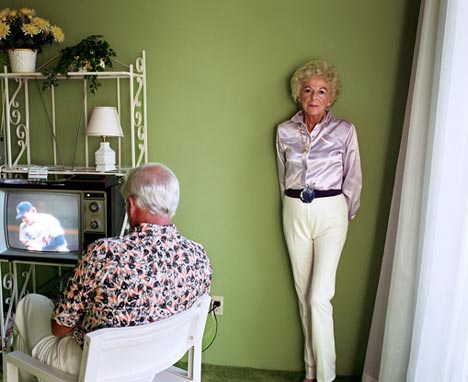
JS
It makes perfect sense to me. Thats not always a good barometer however. I think two things about what you say regarding the opening. One is, yes, there is some connection, or reference to photography. Second, the way in which, in both those scenes, the scene is being seen from off stage. The woman makes it real……yes, that seems right. But it is the memory and the sense of the past, that memory, lurking just out of sight, off stage. I have said many times the off-stage is the unconscious and the stage the conscious. Ergo, not much of importance is happening on stage. But Im interested in how photography intersects…..because I can feel this, but I am not sure I understand it.
The physical material space of the stage is not how its defined. The stage is not defined this way and its a mistake to ever write as if it were. The stage is, again, a sort of dream space. And once you do that, I think you, the writer, begins to get pulled toward some other even further unknown space. The deep form of the dream, in a sense. Now, the photographs in that scene suggest —to me anyway—the reasons why we all find photographs so interesting, and compelling. Early photography has always been deeply fascinating to me. I mean I can stare literally for hours at late 19th century photos. And it is in a sense the same reason I think a certain sense of mystery is so attractive. Those memories, in that first scene, are lodged or coded into those photos. And when, later, he is shown X Rays……I was fascinated with this recently …. and you think, how is my identity distilled into those X rays. Or more, something like an MRI. Its not a photo, its not an X ray, I dont know what it is. It’s a math equation. So …. the early photos contain something that increasingly has been lost. Now, if one looks at a photo of yourself when you were a child, you are looking at a stranger. You cant remember what was in your head. And its wrong to even speak of “in your head”. But that stranger looks back at you with a certain accusation. The same way , in one sense, that animals always gaze at you with accusation. But the child, you the child, at least to me, is always saying, why did I not stay this way? Why did I grow into a forgetful mass of guilt and regret and anger.
I think that the question of suspect space is interesting. I think perhaps I don’t find it exactly suspicious — but it IS suspect. I know it is. But here we sort of return to questions to do with image and text and the interfacing of this stuff…..and it’s very complicated. But let me try to focus just on a narrow part of it. The “space” isn’t on stage. What is on stage are only the preparations for finding or conjuring a theatrical space —- for that actual space isn’t occupying square feet of board and carpet or whatever. The space being built up is dream space, for lack of a better word. And it is a sort of side bar issue really, but I think this is the place where a confusion resides vis a vis Jung and Freud and whoever. The idea of some core set of structural elements in our psyche is beside the point — though for Jung it is crucial….archetype…..and I dont buy this at all. Its a process, a process on a continuum….and it feels far more Buddhist or Vedantic to me. What Freud called archaic remnants. Well, this seems very sort of clumsy thinking. Its not untrue, its just being discussed in a sort of ass backward way. Again, why I feel better with Lacan, often. But anyway…the dream space is recreating. Space IS recreating. Theatre as an organ of thought, or of reality. And we all daydream and all have our own private traumatic history that we compulsively repeat and rewrite, but in theatre, its social. Thats so interesting and strange. Why is there an audience? Thats the question.

Mickey One, directed by Arthur Penn, 1965
So, in that first scene……..I think, like in Dogmouth, too, the first scene…..well, in a good many of my plays…..the first scene takes place outside any naturalistic props or images. I love the empty stage. This is, Shakespeare, in the Mad Tom scene again. I am jumping off the cliff. Its just two men on a flat stage. The Tempest, too, and Lear. So the scene is theatrical. It is ONLY theatrical. What it seems you suggest I am doing is building up another real by accessing some set of codes embedded within photography or film. In Dogmouth you have the empty open desert and just a railroad track going upstage……dissapearing. And a man orates. And a young woman answers. At first you dont see either of them. Then the man, then the woman. I was thinking of biblical texts there. Voices appear. Space and distance traversed……and I feel Shakespeare does this a lot, too. He does it in The Tempest, and in Lear and Hamet and what is interesting, with Shakespeare is how in the very late work, his syntax changed. In Two Noble Kinsman … which is the last I think, and Shakespeare only wrote a few scenes…..but he wrote Act one, scenes one, two and three. Its insanely dense language. I am still fascinated by those scenes. Because the language has been pushed to a place where notions of realism are meaningless. I cant think of any other writing for the stage that does that, exactly. Pinter does a version of it all the time, of course. Sarah Kane in a lesser sense, but Handke for sure. But…..so, what is this aperture you speak of? I’m not sure exactly. But when you say the wounding of theatre….I love that, and I think that is right. If you are trying to keep the spectacle, the system of social domination, of hyperbranding, to keep that away, beyond that gates…..then if you start with just “the theatre”….its a process of avoidance, or substraction. I can feel that, and when I direct I feel that. I think certain modern dance efforts are doing the same thing. And certain films do it. The dance in Dogtooth, for example, is brilliant. It is SO brilliant because it is a dance of rejection and subtraction. Its beautiful. The narrative in The Master, recently, struck me as so elliptical…..and in a sense also built upon the photograph. So elliptical as to be impossible to grasp, conventionally. But in film, and this is why theatre wins, the edit, the cut, cheats the filmmaker of certain materials one can use in the rejection. The refusal. The fact you can cut away is actually a big hinderance. It tends to force filmakers into kistch choices. Its very hard to avoid. Pasolini knew this. Teorema is a film, for me, about trying to avoid that.
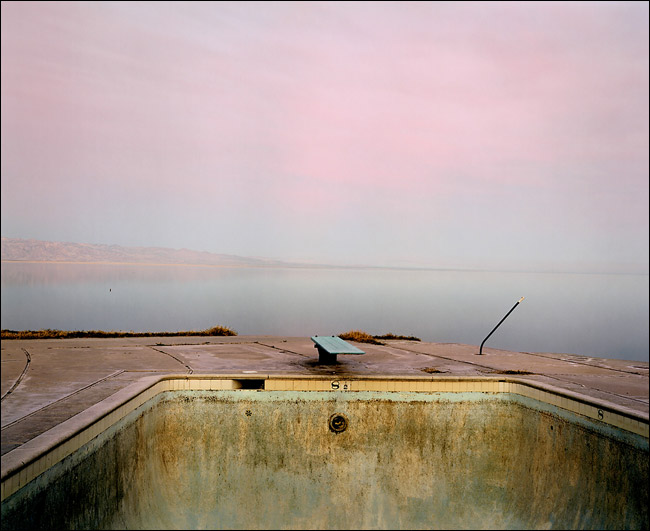
But the wounding is because finally we are enclosed within the spectacle. There are symbolic versions of agent provocateurs…..its as if COINTELPRO had a theatrical division…..the signs and codes are so exhausted…..and it forces the creation of a text that is very resistant to co-option. This is why the opening of Two Noble Kinsmen is so relevant. Now Eli Rozik in this book which I found quite good, quite useful, is still coming from this universaliizng strategy…..to make coherent, to systematize what cannot be made unified or unified. And really, this touches upon the idea of enjoyment…….of artworks being enjoyed. I never think of “enjoyment” because it is so secondary. I dont want sacrifice and sadism, but I think there is an element…..at this point historically……..where austerity is a virtue. The spectacle has colonized enjoyment, anyway. The very word “entertainment” feels like an infection. The stage, when that first scene in Parking Lot plays out…..the sense of the photograph is embedded somehow…not just the photo on stage, but the idea of the photograph and how it links to identity. Which is what is missing it seems to me in Jung and a lot of anthropological approaches. And in a sense all the post modern thinking feels often to miss some of this. For often the tacit default setting has to do with stability. On the part of the thinker, as he or she consumes the play.
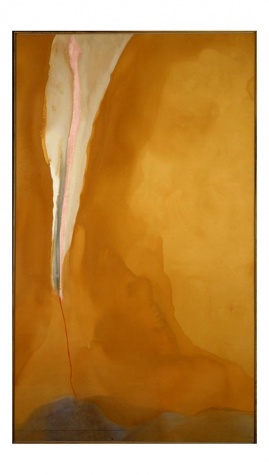
Molly:
First, I wanted to say I feel that these apertures that open, like the ones I’ve chosen but there are more, might reverse this relation that you describe where on stage is conscious and off-stage is unconscious. I feel they at least temporarily switch this and raise the possibility that offstage is the conscious, and the conscious is always off stage, outside the theatre, and that in the theatre, which is as you say this dreamspace, is subconscious (not perhaps an unconscious) that is always implying a conscious that is nonetheless a fraud. the spectacle, the visible, the transparent, what is not where visuality dominates the aural and language. (This would be bordering Lacanian territory but not quite in it). So that perhaps what’s happening in these moments where the theatrical space that is an aural space, that has three dimensions and yet is not some constructed physical volume, is invaded by this conscious, these evidence memory – the conscious removed and trusted to recording devices like photography – is that you begin to show what’s been lost and could conceivably be recovered from the spectacle. What could conceivably survive this COINTELPRO – that the theatre itself has this task of showing that inadequacy but it can’t really vanquish it. Now it has begun to live on it, to feed on it – once cinema borrowed from novels, theatre, photography, not all these are absorbed and dependent on the cinematic. But you don’t permit the theatre to take up a derivative position. Your plays show the theatre resisting, persisting, and undermining this spectacle that nonetheless invades. Would you agree with that?
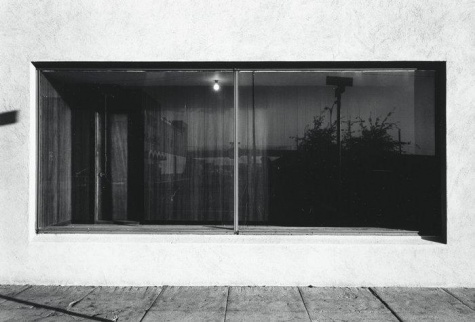
JS
Well, I was just looking for clips from Mickey One…..and found a couple. I include a snatch of dialogue…between the Beatty character and a mysterious woman.
Woman,……You’re hiding from you don’t know who? For a crime you dont know if you even committed.
Beatty…and the only thing I know is that I’m guilty.
Woman…Of what are you guilty?
Beatty….Of not being innocent.
Now, I’m laughing a bit here, but to think that in 1965 a Hollywood studio would still fund an american imitation of the French New Wave is pretty funny. But I suspect exchanges like that sunk into my fourteen year old brain. It reads almost like a Lacanian analysis session transcript.
Ok, seriously, I think that this notion of flipping the inside/outside, or turning it inside out is a better image maybe…..but I think there is truth in this somehow. I have said before, that to do theatre today is to practice some sort of reclamation project. Its like deep sea salvaging or something. And if this is right ……at times what is on stage is the un or pre-conscious, then this projected ego outside, left behind in a sense, or perhaps not…but outside…..then this would have interesting implications for the social aspect. I keep coming back to that. For its not just what is going on up there in the ritual space, it’s what is going on in the audience. It’s a kitsch audience, with kitsch attention.
This isn’t some sort of perjorative judgement on the people sitting out there, because they can’t change the kitsch-ness. I have sat in audiences and thought, god, I am part of this spectacle and I don’t know how to escape.
I think though, that somewhere in all this is a historical aspect. And its very hard for me to articulate. It is where I start to sound a tad Heideggerian. But I think the everyday experiences we have…..in a sense, especially under the fascistic mediation of the West and the neo-liberal subsumption of life……those experiences sort of come pre-coded and pre-digested. This is also where naturalism enters. The theatre distills something. It distills thinking by its unique form of thought -on-stage. And by doing so, it reclaims something of the vast mystery of the everyday, because within the everyday lurks history, and that history is the uncleansed history I think. This is why theatre is, perhaps, in this oppositional tension with technologies. With film, and with photography, but maybe, more, its a battle with the surplus image, the surplus data — with what I keep calling kitsch. There is one more thing, though, and that is the text. Into this space comes the text. The narrative. And that is significant. I mean it is the aperture, the text opens. It is an event …..the speaking of this text has several meanings, meaning events. And it is why somehow, that the text must be broken. It must be fragmented and wounded. I mean its not a novel. Its not a film, either. Although film is a big topic, obviously. But the text is not conveying meaning, its not communicating. The text is a rite, a ritual. But it is not the same as what an anthropologist would call a ritual. Theatre is ritual but its not the same ritual. Text ….when people talk about metaphor, this drives me nuts, too. Metaphors that work in theatre are not simple. I think often there is a confusion, first off, with metonymy and metaphor. But putting that aside, in theatre….let us say you have two high windows……as if of a monastery, far up stage….and raised. And two characters look up at them. And one character says I think God is in that window, but the window is black so perhaps God is dead or gone.

What kind of meaning do we have? Is this a metaphor? A symbol……what? I mean it depends on the context, but in a film, you cannot have that scene. You cannot, its trivial. Why?
But I think the question of realism, and naturalism is very important. For its related to everything I just said. We cannot float in some place where we do not understand the practical meaning of *things* around us, including words. The things themselves are easier to give genuine value to in theatre. In film its harder because the camera is a technology with a predisposition to adhere to a level of “realism”. That’s an entire other topic, though.
So if this flip happens, where the off-stage comes on-stage….then it has to appear in another way. It cannot be performative in the same sense. Definitions of “performance” are often very muddy. There is something about performance, the thing that makes it a performance, that separates it from ordinary life. Schecner is confused about this, too, but partly because I dont think he understands labor. What productive labor means, or really, once meant. This is where a confusion about “presence” enters the discussion. But putting that aside for a second, to stay on message here…..a play like Parking Lot, for example, is always oscillating between inside and outside. I mean the restaurant is not a restaurant. I think you see an empty stage, and suddenly you hear background restaurant noise…….but nothing is different on stage. You’ve done something that makes clear this is not “real”….its artificial, but it is artificial in a very particular way, and thats the key thing. There is no reality-effect. All the reality effects are removed. What is left are markers for reality, reality traces. And the two actors perform the “restaurant” — but there is no realism in those performances. There is only the text. And the elliptical nature of that….this inside/outside oscillation, is another way of distancing those ‘reality effect. Now, defining ‘reality effect’ is hard…..because you could say, well, the restaurant noise is a reality effect. And in sense thats true. But its not working as part of a unified whole. The reality effect is isolated….so its experienced more as a trace element in this whole drama unfolding.
One of my favorite photographers is a fellow Southern Californian, Lewis Baltz.
Here said during an interview, that architecture was now more like graphic design. The Micheal Graves syndrome.He photographed what he called a sub architecture. Images not referenceing their own canon of accepted images. The photograph, as Janet Malcolm once said, shows us a world of power lines, electrical outlets and cords. In other words the stuff we filter out as we look. In theatre, this state of what is meant …by the bourgeois establishment…..meant NOT to be seen, is what I like to write about. The Lincoln Center audience doesnt want plays about meth addicted ex viet nam veterans….UNLESS there is a sentimentalizing redemption…..then MAYBE you can show it. If you lie about it, you can show it. So…..this idea of the democratic eye, I think in a sense also applies to theatre. You must not use the language, visual or textual, of the accepted canon, of the establishment of state. (it is interesting to do exercises with found text, using just the language of a white house press briefing). So…..this off stage, expelled material…..is that which is expelled and repressed for a reason, and politically its expelled as well. For me, theatre does something of this thing. Or at least “I” try to do it. So we’re operating on a couple levels here, but in terms of the form, they relate to each other. They cross pollinate, too.
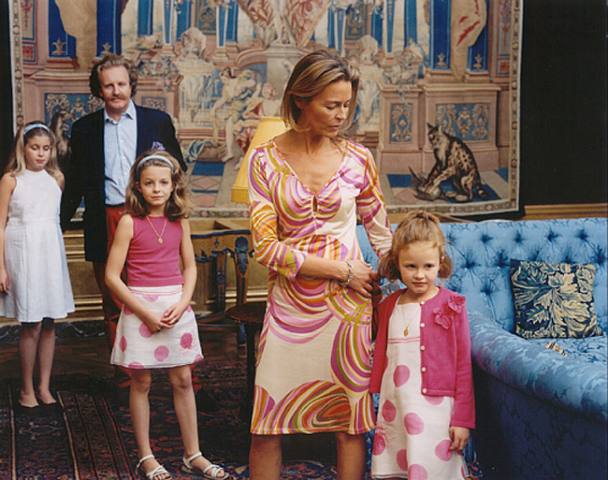
Molly:
So much here we really need to split like in a card game. But let me just take a detour into something you say in passing. First – thanks for that bit of the Beatty film; it does seem to be legible two ways. On the one hand, that’s a line like -what are you rebelling against Johnny -what’ve you got, and the like. He is another in that gallery. But then it has this other level, that it’s self consciously philosophical; Sartre is looking on. And Camus unfortunately. Okay I don’t know how candid and courageous I really find this, but say I accept the contrast to the kitsch we’re overwhelmed by now. So roughly laid out is that distinction that Umberto Eco put simply between the popular fiction/art that consoles and the elite stuff that disturbs and disquiets. But you say you are actually more disturbed, in a sense, by being lured into your role in the reproduction of kitsch. What about a) the actual effects of the kitsch? Are you really immune to them (I think they’re physical – Eco, again, says you can’t put a honeydrop in your mouth and pretend you taste salt. You have to cry at the end of Love Story, even though you may after have a critical perspective on your crying. you can’t not cry.) – are you immune or does the embarrassment overwhelm or is it just a kind of disgust? And if you are immune, what about the others, the majority, who aren’t? I return all the time to this, but what can the disruption that is “good art” do now that there’s no uptight bourgeoisie to épater? I know you have a reverence for some of what I consider the modernism devoted to discomfort, but then you really like stuff that does both, that does fulfill desires and console while also distressing – Kleist, Buckner, von Horvath. This seems like a divagation but I want to get a response about what you think the stakes re in this battle to fend off the spectacle, the kitsch, the false transparency of this dominant cinematic photographic visuality and all that goes along with it.
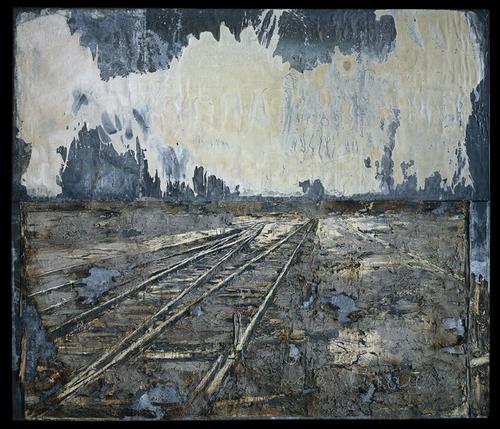
JS
I think firstly, that nobody is immune. I can cry at Pepsi commericals. But then crying isnt a particularly privileged reaction to anything. And a film like Mickey One isnt much more than a sort of interesting sidebar bit of elevated kistch. But so starved are we that when a small morsal of meaning emerges from this swamp of corporate manufactured junk, it seems revelatory almost. But I do think its qualitatively different than most of what is made now, and that in itself is an interesting topic. So, I said above that its a kitsch audience now. That is a problem. The erosion of education…..the ability to discriminate at all. And this crosses political lines. But there is also something relevant here when you mention embarrassment and disgust. I think this is significant on a social level —a culture that has normalized a sort of cringe reaction and then beyond that, even, these days where there is no distinction between cringe worthy and anything else. It is related to whatever we might mean by dignity, too. But I think artists, some artists, have absorbed these factors to reproduce versions that make use of certain tropes and images in ways that mediate the intended meaning. I suspect you have to do that. Its a weird sampling culture now. Which is both positive and not. So, I think…..and I have said this a lot, that teaching a kind of aesthetic resistance is very important. I think our lives exist in such a mediated fashion, where the pull of an erased history, a revisionist history, and a kitsch culture turn perception of everyday life into something like a TV show. Thats really dangerous…..at least instinctively I feel it is. The narcotizing effects of media, and this is a complex issue because its not simple……its not oh this is bad and narcotizing and this isn’t. Its more about a enclosure that turns Shakespeare into kitsch. That turns, potentially, everything into its opposite. So…to back up a second……I think there are different forms of disquiet and there are different forms of consoling. This is why its so tricky. The modernist stuff I revere, as you say, is both consoling in a way, and disturbing in another. But the disturbance is one of awakening …..it reaches a level where reflection takes place somewhere, where an inner life is accessed. The disquiet I felt watching Lincoln was more revulsion and a sort of fear. The enjoyment of great art, whatever we mean by that, is never just enjoyment. And the consolation of kitsch is never just consolation. The distraction of most corporate product isn’t really consoling, that’s what’s so insidious. It is that Kierkegaardian notion of not knowing when we are having fun, when we are being sincere, etc. I don’t think ….I really don’t think any sentient being actually enjoys watching Avatar. I think it sickens people, its soul deadening. But the narrative applied by marketing and so forth has a subtext, and its very clear, that if you DONT enjoy it, there is something wrong with you. It’s just an extension of the culture of therapy — of the plague of anti depressant use. It’s this idea that “happy” is the normal state. But nobody is happy. Its psychotic to be happy all the time. So we have all these master narrative lines running; progress, happy face, technological perfection etc. I cant think of a major hollywood product where technology is not expressed as perfect. Now this leads to a whole sub catagory of storyline where technology shuts down….its a sub group of the post apocolyptic film. But its seen as sci fi. Because we all know in reality that computers solve everything. So, the way in which one responds to some sappy sentimental movie is pre-ordained. Its just a reflex. Its a short circuiting of actual attention. So maybe the distinction comes from this idea of attention. Theatre always, ALWAYS ends up feeling more dangerous, and more anti social in a paradoxical sense, because it simply demands more attention than a screen.
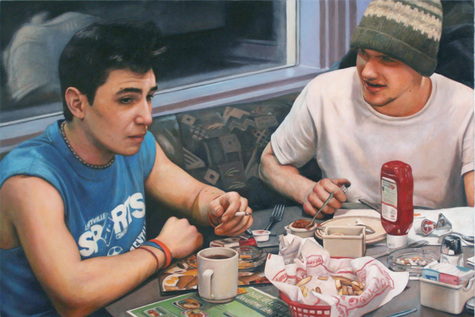
Let me add that I suspect there is a growing resistance out there. In spite of everything, a feeling of spillage, of saturation having been reached. And the numbers sort of back this up. There are various reasons for this, and that too is a big topic. I actually think marketing has finally fallen behind the curve just a bit. I’m not sure of the reasons for this, but that aspect of the internet that is anarchic is part of it. The logic of control would demand total control……but that hasn’t happened, witness the intensifying of the police domination.
____________________________________________________________________________________
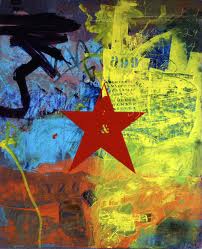
Molly:
Funny you should mention Avatar, I was going to put the question that way – what is happening to these people, what do they mean when they say they loved Avatar. Or any of this shit. In that talk at Socialism last fall that so infuriated me where China Mieville just pretty much just read out chabert’s comments, even my jokes and Mary Wortley Montague (god I am steaming again! but this isn’t about meeeee…)… anyway I know I have been belaboring this for years, our disagreement, but I’d like to try to reintroduce it in a different way To bring this to a temporary conclusion: I would ask what you think about the prospects here. On the blog we were talking about electricity (and this goes with photography), the lighting of cities, to create the age where visuality is so dominant. Mediologists have tended to be right wing, and one of the effects of their white supremacy is a tendency to associate the visual with sanity, order, knowledge, the rational, masculine and civilized and “orality” with barbarism, the feminine, the irrational, the primitive. This is usually sewn up with some discussion of Hitler’s success on the radio, his being all about the voice, which history, reduced to an anecdote of “orality” and “reversion” (from white excellence to oriental archaic decadence and barbarism), then becomes a means of othering the violence and barbarism of Europe, Capitalism and Whiteness etc. But Musil was an anarchistic sort who referred to vying, contrasting human conditions – the quotidian condition of visuality, rational calculation, business, labour, social order, and “the other condition” which is everything from erotic love to mystical ecstasy and schizophrenia. And I mentioned this wonderful Wolfgang Schivellbusch book Disenchanted Night, which really makes you think about the world before electricity, so much life lived in the real dark, where everything that existed was frequently invisible, and what the wiring up of the cities to a power grid has meant to the psychology and sociality of the core. The right wing mediologists, and the right wing psychoanalysts, and even to a point Reich, who was not right wing, tend to assign fascism to “the other condition”, – to expel it from capitalism and the specific behaviours of the imperial EuroAmerican capitalist ruling class – but it seems to me it’s the other way around (if the scheme’s binary can be accepted at all, I think it useful) and to me it seems this is the main thing at stake in your plays, on the most fundamental level – that is, with regard to the struggle to sustain, socially, a “place”/space for “the other condition”.
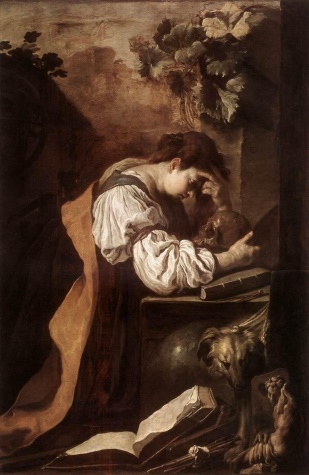
John:
I think you just laid out several of the main themes that run through mass culture. It permeates almost all product that is either corporate or institutional in some way. That world enclosure of white patriarchal capital — and its sub-categories that find expression in certain ideas on progress and development and a fear of the poor and the ‘other’ …. these days, obviously, Islam and China. Now, the visuality we are speaking of, it seems to me anyway, is again, of a specific sort. I’m not sure its ‘just’ visuality per se, but it might be. In any event, clearly, listening, attentive listening has almost disappeared. It is not an accident that certain kinds of director’s theatre are so embraced. A very visual anti-human sort of anti-text. Its just spectacle. Its Seigfried & Roy, its just loud and noisy (or autistic as in Wilson)….the better to be free of the need for the attentive. I suspect that Beckett, for example, is still something the literati go to, its like eating your spinach. More and more that notion of “entertainment” has eclipsed all else. But I think its important, and maybe we can get to this in part three, to understand the reasons that groups like The Living Theatre, and all those sixties happenings and all the sort of improvised group interactions with the audience were dead ends. The text, the word, is the turning of the aperture. It is within that a *space* is opened — or appears. And the recitation of that text — the complex ways in which history intercedes via the gesture of labor, or work, or oppression. Of slavery and misogyny. Of authority. That appears in the uncanny performative. The other condition is, as a concept, not something that institutions ever think about.They simply react, they feel anxiety in the face of something that feels as if its raison d’etre is to de-stabilize. It is, I would hope, something in my work….the voice of the unheard, and what we often, perhaps, don’t hear of ourselves….but you can’t just put that out there…..you can’t just, like a good liberal…..create, or reproduce that voice….its instantly paternal and false. Its co-opted and so, you must find the distillation of that sound, and its in narrative, and in …..for lack of a better word right now…the wounding of the entire project. This is Artaud in one sense. It reminds me of putting African tribal masks in a museum in Europe, which is another form of killing the other. Its another form of colonialism. This is an inverted form of that dynamic. The text carries history, and you have to not erase it. And that’s hard. There is a poetics. It requires listening.
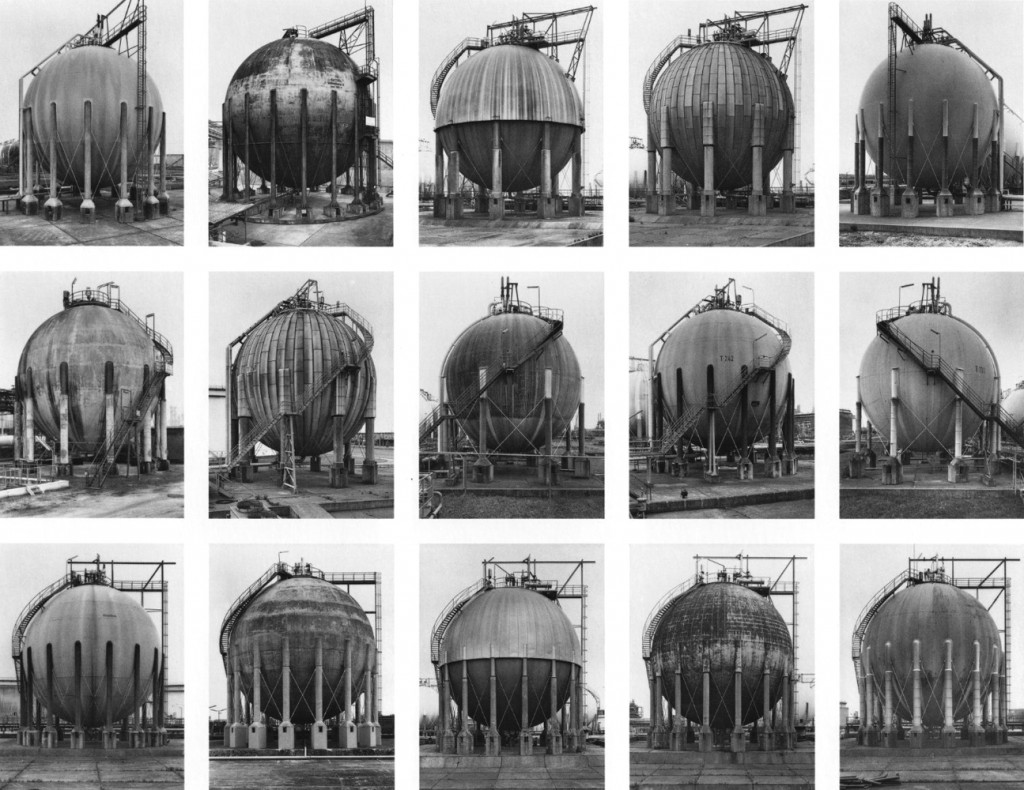

Speak Your Mind